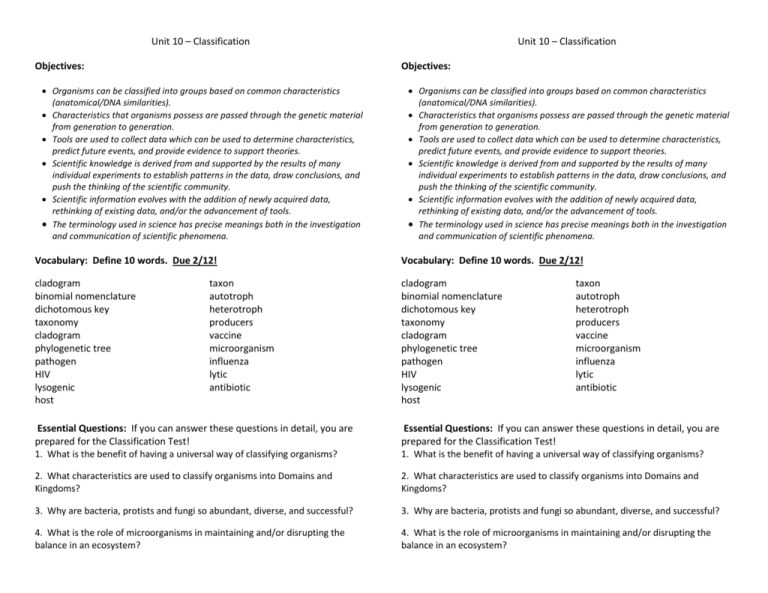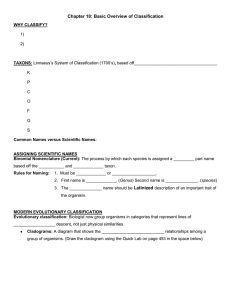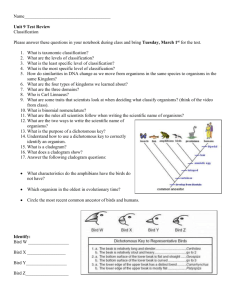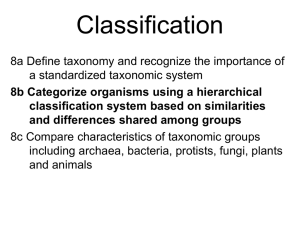Unit 10 objectives and vocab
advertisement

Unit 10 – Classification Objectives: Unit 10 – Classification Objectives: Organisms can be classified into groups based on common characteristics (anatomical/DNA similarities). Characteristics that organisms possess are passed through the genetic material from generation to generation. Tools are used to collect data which can be used to determine characteristics, predict future events, and provide evidence to support theories. Scientific knowledge is derived from and supported by the results of many individual experiments to establish patterns in the data, draw conclusions, and push the thinking of the scientific community. Scientific information evolves with the addition of newly acquired data, rethinking of existing data, and/or the advancement of tools. The terminology used in science has precise meanings both in the investigation and communication of scientific phenomena. Organisms can be classified into groups based on common characteristics (anatomical/DNA similarities). Characteristics that organisms possess are passed through the genetic material from generation to generation. Tools are used to collect data which can be used to determine characteristics, predict future events, and provide evidence to support theories. Scientific knowledge is derived from and supported by the results of many individual experiments to establish patterns in the data, draw conclusions, and push the thinking of the scientific community. Scientific information evolves with the addition of newly acquired data, rethinking of existing data, and/or the advancement of tools. The terminology used in science has precise meanings both in the investigation and communication of scientific phenomena. Vocabulary: Define 10 words. Due 2/12! Vocabulary: Define 10 words. Due 2/12! cladogram binomial nomenclature dichotomous key taxonomy cladogram phylogenetic tree pathogen HIV lysogenic host cladogram binomial nomenclature dichotomous key taxonomy cladogram phylogenetic tree pathogen HIV lysogenic host taxon autotroph heterotroph producers vaccine microorganism influenza lytic antibiotic taxon autotroph heterotroph producers vaccine microorganism influenza lytic antibiotic Essential Questions: If you can answer these questions in detail, you are prepared for the Classification Test! 1. What is the benefit of having a universal way of classifying organisms? Essential Questions: If you can answer these questions in detail, you are prepared for the Classification Test! 1. What is the benefit of having a universal way of classifying organisms? 2. What characteristics are used to classify organisms into Domains and Kingdoms? 2. What characteristics are used to classify organisms into Domains and Kingdoms? 3. Why are bacteria, protists and fungi so abundant, diverse, and successful? 3. Why are bacteria, protists and fungi so abundant, diverse, and successful? 4. What is the role of microorganisms in maintaining and/or disrupting the balance in an ecosystem? 4. What is the role of microorganisms in maintaining and/or disrupting the balance in an ecosystem?







